- HOME
- BEST POKER TRAINING SITES
- POKER GUIDES
- ONLINE POKER ROOMS GUIDE
- POKER NOTES LIVE APP
- MORE
This series of PokerGO’s original programming reviews is proudly brought to you by ProfessionalRakeback.com.
For many poker fans, their exposure to the world of poker only goes as far as the shows they see on TV or the articles they read on sites such as PokerNews and Cardplayer Lifestyle. Many are clueless as to what goes on behind the scenes of a major poker tournament or the struggles that top players experience in their daily lives.
Inside Poker takes a deep dive into the world of poker, bringing fans interviews from top players and industry professionals. Each episode features around 20 minutes of fast-paced, hard-hitting and often hilarious interviews giving viewers a peek of what goes on away from the felt in the poker world.
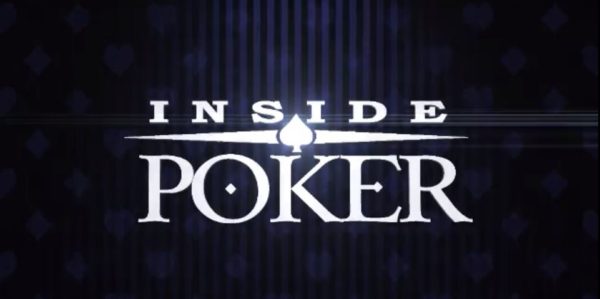
Hosts Sarah Herring and Matt Savage take a more in-depth look at the world of poker. Through a series of interviews and on-location segments, the pair explores the lives of the players, industry professionals, and media members that help to make poker the great game that it has become.

Inside Poker hosts, Matt Savage and Sarah Herring
Each segment has an overarching theme. For example, Episode 2 focuses on women in poker, featuring interviews with both Jennifer Harman and Jennifer Tilly. The episode explores the evolution of women in the game and the struggles they still face in a male-dominated sport. Other episodes focus on the World Series of Poker, the World Poker Tour, poker personalities, poker media, playing on the pro tour, and more.
Something that poker fans will appreciate is that these segments come off as an “off the cuff” and natural, highlighted in the opening segment of the first episode when Savage called the World Series of Poker “gramazing,” which we can only assume is a hybrid of great and amazing. During the interview, you will see more of this as Savage allows conversations to flow naturally rather than sticking to a pre-determined script.
Watching “Inside Poker” on @PokerGO and found out that @SavagePoker think that the @WSOP is “Gramazing” 😀
— James Guill (@compncards) June 9, 2018
Here’s a list of the series’ 10 episodes, along with their titles and which personalities are features in each one:
Savage has always done well at interviewing players and others in the poker industry, so it was of little surprise that he was hosting an interview show. I felt he hit the perfect balance of talking about poker and bringing out aspects of his guests’ personalities.
I also liked the different venues picked for interviews. Whether it was in a poker room, on the rail of a final table, or at a bowling alley, each venue seemed fitting for each guest. That may not seem like a big deal, but the atmosphere can help contribute to a great interview.
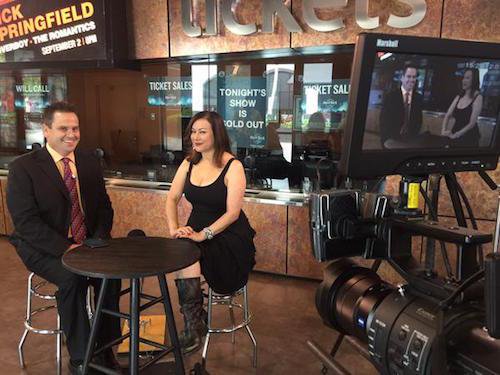
Matt Savage interviewing Jennifer Tilly
What I liked best about the series is the variety of personalities he interviewed. In addition to talking to top players such as Greg Merson, Chris Moorman, and Jason Mercier, Savage also interviewed senior executives from both the World Series of Poker and the World Poker Tour. His interview with photographer Joe Giron gave a glimpse into a side of poker media that’s often overlooked.
One thing that I would have liked to have seen more of is focusing on tours and executives not tied directly to either the World Series of Poker or the World Poker Tour. While it is understandable that those tours will receive the greatest focus, as they are the ones that are most familiar to the general public, for the show to be called “Inside Poker,” I felt there needed to be a bit more variety in what was featured from the industry side.
#PokerCentral has another premiere for you tomorrow. Don’t miss a new episode of #InsidePoker https://t.co/tou98NIefO
— Poker Central (@PokerCentral) March 20, 2016
In terms of the show’s individual segments, I felt that the “Savage on the River” segments were a bit “meh.” Except for the one focusing on misogyny in poker, they came off just a bit stiff and dispassionate in my opinion. To me, less looking around to different cameras and a bit more passion would make those segments seem more genuine.
This series was originally produced back in 2016 for Poker Central before the switch to PokerGO’s new network subscription format and has yet to be renewed for a second season. That’s a bit disappointing because there’s a lot of room to expand for this series.
Matt Savage and Sarah Herring do a great job in giving fans a broader view of the poker world, and there are so many other players, tours, and venues to explore to provide content for a second season and beyond.
With the recent developments in sports betting and online poker regulation in the United States, producers may want to put some focus on these topics, starting with a look at the past of iGaming and the future, especially in the United States.
Inside Poker has only scratched the surface of what’s out there, and there are many more stories to tell from around the poker world. Hopefully, the producers over at PokerGO decide to revive this series or produce a similar one soon.
Cardplayer Lifestyle would like to thank ProfessionalRakeback.com for sponsoring this series of PokerGO original programming reviews. We encourage you to visit their site and check out their offers.
Online poker is something that has been around for over 15 years. Poker players from all over the world come together (virtually, of course) to battle and win huge amounts of cash. This is a great way of being able to enjoy poker without having to travel long distances to brick and mortar establishments in order to win big prizes. There are plenty of online poker sites that offer great poker games, and this is why the players keep coming back for more. If you are interested in starting to play online poker, make sure to keep reading this article to find out five of the most important things a beginner should know before jumping in.

Finding the right poker site for you is very important as you’ll want to make sure that you are getting exactly what you want out of your poker game. If you are looking for online poker, be sure not to accidentally sign up for an online casino or bingo site that also “happens to offer” online poker games. You want a dedicated online poker site with the widest variety of poker games on offer and likely the largest pool of potential players to compete against. Naturally, you’ll also want to make sure that the site is secure so as to ensure that your money is safe once you make a deposit or wish to process a withdrawal.
Many people who have played online poker may tell you that it is rigged or that you are not playing a fair game. At the overwhelming majority of online poker sites, however, this is just plain not true. All the well-regarded online poker sites actually use random number generators (RNGs) to ensure fair play. Moreover, these RNGs are usually monitored by a third-party outfit that offers yet another layer of fair play protection.
The thing about online gambling is that its legality differs from one country to another, and sometimes within a country. Some countries are very welcoming of online casino and poker sites and let their citizens (or even citizens of other countries) indulge to their hearts content so long as you’re physically located within their jurisdiction. On the other hand, other countries like the United States or Germany are more particular with their rules and regulations as pertain to online gambling.

In Germany, for example, players can access sites like https://de.quasargaming.com/spielen/bookofra that are actually hosted in neighbouring countries. In the United States, online poker is currently regulated by four states, Nevada, New Jersey, Delaware, and Pennsylvania. Wherever you are playing, just be sure that the site that you are using has an online gambling license.
If you are an online poker beginner, you’ll likely find that you are not as good as many of the other players online. For that reason, we recommend that you don’t jump straight in to the deep end, playing for the highest stakes available. You’ll likely lose a lot of money, and quickly!
Many people become professional poker players after having started off playing online. Perhaps, one day, you’ll be a highly ranked poker player yourself, but you’ll first have to gain lots – and we mean LOTS (think years!) – of experience playing and study hard to continuously improve your game. That’s what the best players do, and that’s why they’re on top of the game.
Playing in @MichaelPhelps celebrity poker tournament tonight, tough competition w lots of pros here, in over my head a lot
— Hank Haney (@HankHaney) September 18, 2011
Will all of that said, the important thing is that you shouldn’t get put off from giving online poker a shot due to the competition. Especially at lower limits, you’ll come up against experienced poker players, but you’ll also encounter many other beginners like you. Perhaps, for that reason, you might even wish to start out at the play money tables. Once you’ve got the hang of it you can try real money play, then slowly but surely move up in stakes if you’ll start to become a consistent winner.
Our final point that beginners should know about online poker is that it can become very addictive. It is true that you are more likely to play more hands of online poker than you would if you visited a brick and mortar casino, but that’s simply due to the fact that the mechanics of the game are automated, rather than manually occurring with dealers, chips, calculations, etc. Moreover, it is much easier to join in on the poker fun from the comfort of your own home, so you are more likely to spend more time playing this way.
What you must remember, however, is that it’s real money you’ll be playing with. When you just see numbers on a screen, it’s easy to forget that it represents cash!
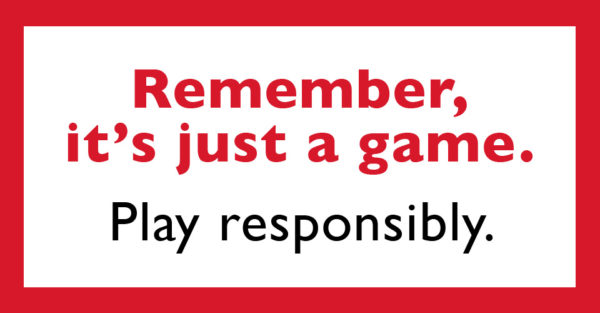
This is why you should make sure that you only gamble what you can afford; discretionary funds. Many of the online poker sites allow you to set limits and even self-exclude so that you make sure to gamble responsibly. If you ever find yourself gambling more than you can afford, make sure to get help and talk to someone if you need to. Addiction is a very important and dangerous thing so make sure that you always stay in control and don’t let the gambling aspect of poker take over the fun game play.
As we’ve made clear, for online poker beginners, there is a lot to think about. Choosing the right site should be your first step, and of course not jumping right into the deep end and playing for high stakes. You should always make sure that you gamble responsibly and that you are responsible with depositing your money to sites that are safe and secure. Never give the details of your account to anyone who you cannot trust. Once you’ve got this all covered, you’ll be able to start your online poker career and perhaps even win some money!
This series of PokerGO’s original programming reviews is proudly brought to you by ProfessionalRakeback.com.
I’ll confess, I don’t watch much television. Apart from “Grey’s Anatomy” and “Scandal,” and the occasional WSOP live stream, I’m just too busy to sit still for more than five minutes. So, for me to watch a whole series, in one sitting no less, says something.
I originally sat down to watch an episode of “Dead Money: A Super High Roller Bowl Journey” to prepare for an interview with Matt Berkey. To be honest, I didn’t intend on watching the whole series. But I did. And I loved it.
In poker, the derogatory term “dead money” refers to a player who is unlikely to win because they lack the skills to overcome the other players.
Berkey, while obviously a talented professional, is mostly a high-stakes cash game player and the $300,000 buy-in for the 2016 Super High Roller Bowl was the biggest tournament entry he had ever posted, by far. Those two facts are why others might perceive him as dead money.
In the first episode of Dead Money, we hear the following from Berkey:
If 48 guys on that list scrolled through and stopped at my name, 45 of them would consider me dead money in the field. Which I’m fine with.
The eight-episode series follows the journey of a dead-money player as he prepares for the biggest tournament he’s ever bought in for on one of the biggest stages of his career.
It provides a peek into strategy meetings, decision-making at the 2016 Super High Roller Bowl final table, and personal reflections on both life and poker. Check out the trailer, below.
Dead Money is different than most of the other content you’ll find on PokerGO, or anywhere else for that matter.
Most of the poker content out there features final table action, interviews, or off-the-felt shenanigans. The viewing public rarely sees exactly what a successful, high-stakes poker professional does to stay relevant in the game.
Before you watch, you should know that Dead Money doesn’t highlight a poker professional’s career. That said, you get a better understanding of Berkey throughout the documentary.
It doesn’t showcase poker strategy, but you’ll get a view into some high-level thought processes.
And it doesn’t glamorize the game of poker. Although, there is plenty of pomp and circumstance around the Super High Roller Bowl.
What Dead Money does do is provide an authentic and rare glimpse into what a seasoned poker professional does to prepare for one of the biggest poker tournaments in the world.
Dead Money is what is missing in the world of poker content. It fills a gap and provides a complete view of what it really means to be a professional and stay at the top of the game. And that is why Dead Money works.
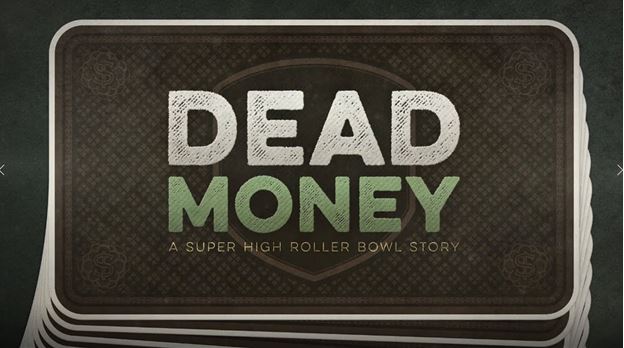
In case it wasn’t clear by now, I highly recommend the series.
It is not often you see a professional poker player open up about their vulnerabilities. In a game where image plays a big part in how players play against you, projecting anything other than being the best player in the game can work against you.
During my aforementioned interview with Berkey, I asked him why he would play a tournament where he might be considered dead money. Here’s his response:
The fact that one event had so much riding on it for me, the fact that this may be the only time I ever play it, the fact that I would still have to work harder to be prepared for the event itself. There is a lot of potential there to give me the edge. I do have natural poker ability. I understand and embrace the fact that being different is as much of an advantage in this field as it is a hindrance. But it’s not like I’m starting from scratch or I’m some amateur who doesn’t know how to the game.
Berkey embracing the fact that he thinks differently about the game is what makes this series a must-watch.

Not too long ago, I wrote an op-ed talking about how I found most of the televised poker out there to be boring. It seems like we mostly get the same formula: the same players playing the same game in a different setting.
That doesn’t mean that there isn’t great content out there. Dead Money is an example of that. In fact, Dead Money won an American Poker Award for the best content of the year and it was deserved.
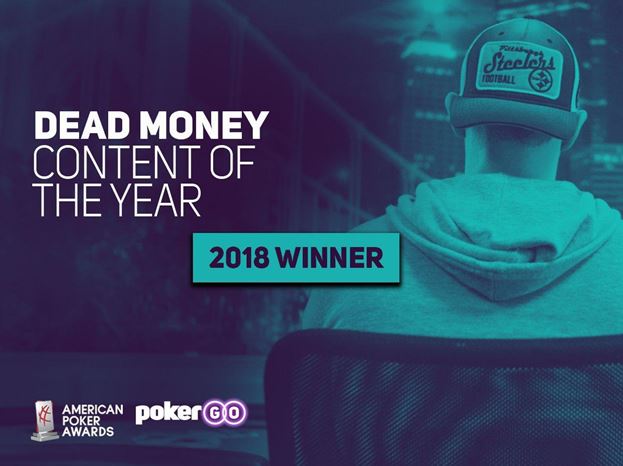
Image courtesy of the American Poker Awards
The fact that it is different isn’t the only thing that makes it good. The production is top-notch, it is broken up into small digestible bits, and it is not predictable in the slightest.
The popularity and success of Dead Money spawned PokerGO’s latest documentary, “Insiders: Super High Roller Bowl 2018,” which follows Daniel Negreanu, Seth Davis, and Brandon Adams during their preparations for the 2018 Super High Roller Bowl.
Knowing what PokerGO is capable of producing makes me excited to also check out the new series and gain some new insights into what it means to make a run at a big buy-in tournament.
The fact that I want to watch says a lot. It’s hard to get motivated to consume poker and gambling content when my full-time job is creating poker and gambling content.
The new series has some big shoes to fill, however, because Dead Money set the bar extremely high.
Cardplayer Lifestyle would like to thank ProfessionalRakeback.com for sponsoring this series of PokerGO original programming reviews. We encourage you to visit their site and check out their offers.
This series of PokerGO’s original programming reviews is proudly brought to you by ProfessionalRakeback.com.
Before watching PokerGO’s “Stories From the Felt,” I had never thought that poker could make me cry. Or, at least, I never thought hearing about somebody else playing poker could make me cry. But that’s exactly what I found myself doing after watching what is without a doubt one of the most entertaining, fun, and revealing series you’ll ever watch about the game we all love.
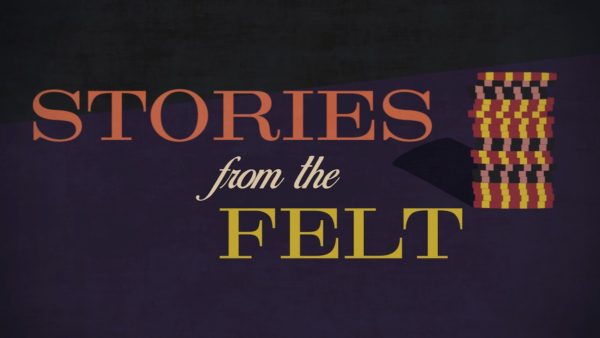
Each episode of Stories From the Felt takes a single person, place, or event from within the poker world and explores not just the story of what happens, but also explains its impact as a cultural and personal phenomenon.
There’s the episode on The Mayfair Club, which gives you an inside look into one of poker’s most iconic underground games. What I really enjoyed about this episode was its focus on the club as a tangible manifestation of poker’s transition from the shadowy periphery of the American gaming scene to the very beginnings of what would become the modern, global phenomenon we know today.
The Mayfair Club was home to New York’s best players and was @briankoppelman’s inspiration for “Rounders.”
@Erik_Seidel, Steve Zolotow, and more Mayfair Club legends tell their #StoriesFromTheFelt. https://t.co/aDTeNfkGuS pic.twitter.com/pJQfrRQCOP— PokerGO (@PokerGO) December 9, 2017
If you’re not one for history and nostalgia, but love to hear about the crazy ways in which poker unexpectedly brings out the best in us, you’ll love the episode on the now famous “Bike Bet” between Dan Bilzerian and Brian Rast. It gives Rast’s deeply personal account of just how deeply he had to dig within himself to accomplish an incredible feat of human will and endurance. On the one hand, it’s an excellent window into gambling culture and the type of person who is able to succeed at high-stakes poker. On the other hand, it’s just a fun story about one of the craziest prop bets to have ever occurred in the poker world.
In my opinion, however, the most impactful episode of the series is the one featuring Greg Merson entitled The Wake-Up Call. It chronicles his initial struggles with drug addiction, his getting clean, subsequent relapse, and final triumph over the demons of substance abuse. Putting a human face on an often faceless problem, it highlights the idea that poker as a game can be used to instill discipline, combat nihilism, and help a person find an empathetic and loyal community of friends. It had me tearing up by the end. You can watch the episode below, in its entirety.
Topics of the other episodes include:
What makes Stories From the Felt so enjoyable to watch is that it’s a series that oozes passion.
As a poker player and fan what’s so enjoyable about the episodes as a whole is the way they capture all the different emotional aspects of the game that go on behind the scenes. The ethos of the series is not to talk about the game of poker per se as much as it is to talk about the real human beings who play it.
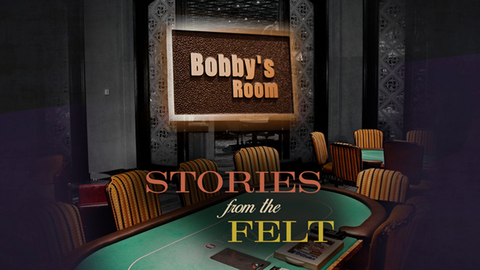
In that sense, the title of the series is actually a bit ironic. Stories From the Felt really has nothing at all to do with what goes on at felt. The felt is just the vehicle; a mirror that reflects our own hopes, fears, friendships, ambitions, failings, triumphs, and ambitions back to us both at the table and away from it.
It highlights the impact that poker can have on the lives and imaginations of those who transcend playing the game to actually living it.
In an era of cheap and easy entertainment, it’s easy to see poker as a lot of very cynical things: A get rich quick scheme that can lead to gambling addiction, a forum for scammers, or even just another petty distraction in a nihilistic world.
What I ultimately loved about this series is that it is infused with optimism, hope, and humanity. By highlighting the positive and creative potential of the game, it puts poker back in what I believe is its rightful place; not as something that controls us, but as a vehicle through which we can express ourselves.
At face value, Stories From the Felt is just an informative, fun, and heartfelt look at some of the more interesting stories to come out of the poker community. At 5-10 minutes an episode, it will keep you interested and entertained while you have your morning Cheerios. But just beneath the surface of all that, there is an undercurrent of meaning that gives deeper insight into what makes this game so fascinating to so many of us.
Bottom line: This is a series that you don’t want to miss.
Cardplayer Lifestyle would like to thank ProfessionalRakeback.com for sponsoring this series of PokerGO original programming reviews. We encourage you to visit their site and check out their offers.
This series of PokerGO’s original programming reviews is proudly brought to you by ProfessionalRakeback.com.
When I found out that PokerGO had produced an original comedy series starring Saturday Night Live alum Chris Parnell, I had high hopes. I’m a sucker for a well-written ensemble comedy a la M*A*S*H, Disjointed, or The Big Bang Theory.
Unfortunately, what I ended up watching was the comedy equivalent to the poker movie Lucky You.
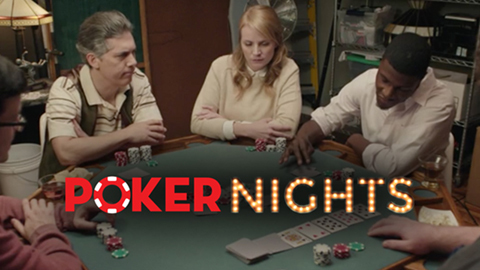
Poker Nights is an original comedy short-series that takes a look at home poker games. Chris Parnell headlines the cast and plays Orson, a player who is the resident fish and oddball of the group. Some of you may remember Parnell from his portrayal of Harold Melvin, “The Lonely Genius” in The Grand.
Joining him in the series are Dan Chamberlain, Emily Tarver, Neko White, Wes Haney, and Richie Moriarty. Tarver is perhaps the most well-known cast member outside Parnell, with parts in Orange is the New Black, The Residuals, Donny!, and VH1’s Best Week Ever to her credit.
Poker fans would also likely be interested in giving the show a watch as none other than Phil Hellmuth, the all-time WSOP bracelet leader, has a guest starring role in one of the episodes.
A weekly poker night with a very special guest. Watch #PokerNights tomorrow only on PokerGO. pic.twitter.com/PBbynfJ3E6
— PokerGO (@PokerGO) July 20, 2017
The series is a situational comedy surrounding a regular home game played in the basement of Liz’s home. The poker is secondary, and according to the show’s premise, hilarity is meant to ensue over the various situations that arise at each game.
Anyone who has played home game poker will identify with some of the situations in the series, but overall the series is unfortunately lacking in humor, due in part to the short-series format.
Poker Nights did a great job portraying a small home game atmosphere. I’ve played in home games where the poker room/basement setup was exactly like the one you see in the series. This, of course, makes sense for a show produced for a poker network.
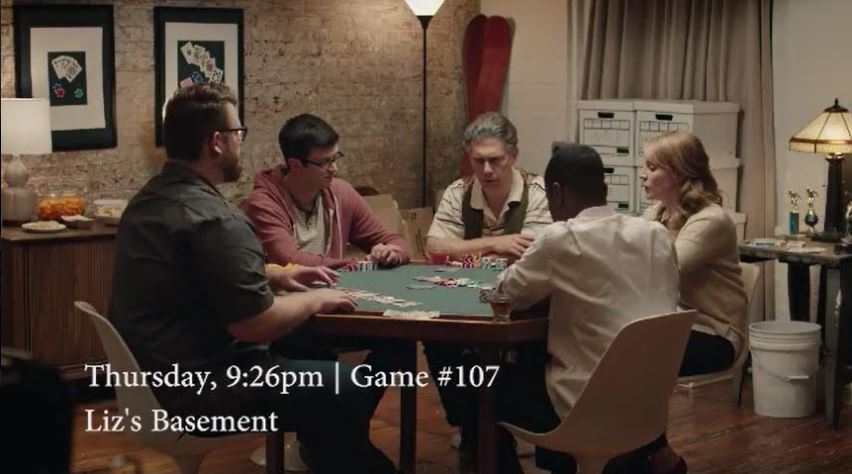
The setting for Poker Nights
Out of the cast, Chris Parnell and Neko White seemed the most natural out of the group. Parnell did a great job portraying the oddball and resident fish of the group. I felt White was the most believable of the regulars and seems like that “one guy” that anchors the average home game.
Next, while I was not a big fan of the series as a whole, a couple of episodes kept it from being a total washout (and no, I am not talking about the Phil Hellmuth episode). Episodes 3 and 5 were the bright spots in my opinion.
In episode 3, the group’s discussion focuses on the actual value of a baby. Ever heard someone say they would bet their first born child at the tables? Well, now you can figure out how big of a bet that would be. In Episode 5, home game poker meets multi-level marketing, so you’ll get a few smirks watching that one.
Both of the aforementioned episodes were more along the lines of what I felt this series could have accomplished, but sadly they only represented one-third of the total product.
Firstly, I think that the short series format for Poker Nights was a huge mistake. In all honesty, it is hard to call this an actual “series” because of the brevity of each episode. When I first heard of the series, I was expecting 22-minute episodes, like many situational comedies.
Instead, Drawing Dead is comprised of six five-minute bite-sized episodes that felt more like glorified webisodes or YouTube clips than a proper series for a streaming service. The main problem with brief episodes like this is that everything has to be crammed in and the quality of the overall product thus suffers.
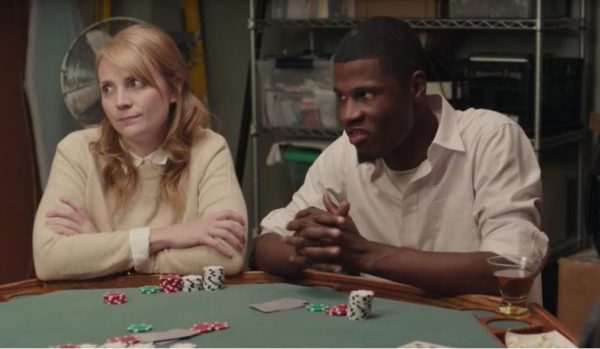
Liz and Zach, played by Emily Tarver and Neko White
For example, those watching the episode would have no clue whatsoever about the names of half the characters as they are never mentioned, nor are they listed in the credits. Lack of character development – again due to each episode’s brevity – means that it’s impossible to know anything interesting about Donny (Chamberlain) or why is Liz mad all the time.
If I had been asked for input during the show’s production, I would have suggested a few more minisodes where each character would be explored in a mockumentary interview style, a la Modern Family. Get a little backstory and interaction with them, so you know a bit more about what makes them tick, and that would help you buy in much more readily once the characters all sit down to play in the home game.
I must say that I found the ongoing gag with Bob (Liz’s husband) rather unfunny and pointless. By the end of the series I was ready to see him tell Liz to go “f**k herself.”
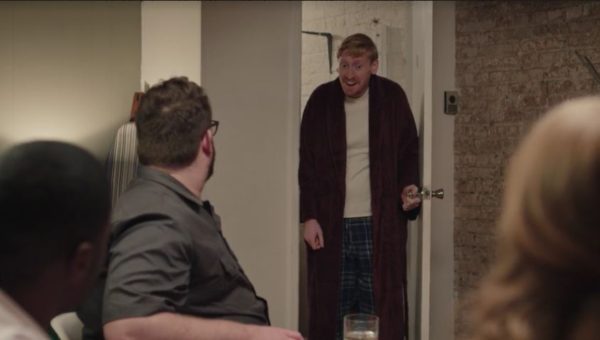
Liz’s husband, Bob, makes a regular appearance towards the end of each episode
Also, I’m a bit surprised at the way the ONLY female regular in the show is portrayed. She acts like she hates everyone, including her husband, and just seems generally annoyed all the time. This seems a poor portrayal of female poker players. The only other female to show up in the show is portrayed as crazy. Not a great way to make women feel respected and included in poker, folks.
In many episodes – once again, due to their brevity – a lot of the jokes felt forced to the point that it felt more like bad acting than it did comedy that was supposed to be “over the top.” While comedy is of course subjective, you can’t force it down people’s throats without it hurting the product.
I think that if the show had been given more breathing room, via longer episodes, the jokes would be far more likely to hit their marks.
As you can probably tell by now, I was disappointed with how this series turned out overall. I didn’t expect M*A*S*H or Modern Family-level comedy, but I was hoping that it would be at least average. I hate to say it, but the only saving grace is that it is a short-form series and I only had to spend about an hour watching it altogether.
I’d rate Poker Nights 2 stars out of a possible 5 only because of the third and fifth episodes. The Hellmuth episode (#6) is OK, but it failed to move the needle for me. In its current format, it is hard seeing this getting a second season, nor do I think it deserves one. If, however, the format were to change or even some characters replaced, it might be worth revisiting. Otherwise, PokerGO might want to stick to other forms of original programming.
Cardplayer Lifestyle would like to thank ProfessionalRakeback.com for sponsoring this series of PokerGO original programming reviews. We encourage you to visit their site and check out their offers.
This series of PokerGO’s original programming reviews is proudly brought to you by ProfessionalRakeback.com.
Deep Issues, as a concept, is perhaps unique to poker. Presenter and masseuse Drea Renee sits down with a number of famous poker faces (both professional players and industry personalities as well as well-known actors and actresses who enjoy poker recreationally), and interviews them while giving them a massage.
SHOOTING NEW DEEP ISSUE EPISODES TODAY FOR @PokerGO 👐🏾 Got a great lineup coming your way soon! @PokerCentral #deepissues #poker #pokergo pic.twitter.com/CNgHLEa3V1
— Drea Renee (@DreaRenee_N) February 7, 2018
The videos come across as very natural, despite the concept being unfamiliar to those who don’t know that poker and massages sometimes go hand-in-hand. Renee certainly knows the players well enough to ask some really good questions, sometimes ones even viewers didn’t know they wanted answering.
A total of 16 episodes comprise the Deep Issues series, with the following list of interviewees:
The rapport and relaxed atmosphere that Renee succeeds in establishing in each of the videos is genuine and there are no jarring edits that sometimes happen in videos with high production quality. As such, I wouldn’t be surprised if some of the videos were shot all in one go, or with very few stops and starts.
One thing I enjoyed in particular was finding more out about players and people you don’t really see getting interviewed that often. Steffen Sontheimer was one of them. It’s known that he’s a very accomplished poker player, but I’ve never really heard much about the man himself. The fact that he only started playing in 2010 is incredible, while it’s just plain awesome that – his success notwithstanding – he still doesn’t consider it a job.

Steffen Sontheimer, getting the Deep Issues treatment
The Mori Eskandani episode was also thoroughly enjoyable, as we get to learn more about the man behind some of poker’s greatest shows. And although I knew a lot about Fedor Holz already, it’s always great to see someone asking him some new questions instead of the age-old classics like ‘How did you get into poker?’ etc.
The mix between poker players and actors is also a great idea that serves the series well on the whole, with Teen Wolf and Orange is the New Black stars Tyler Posey and Jackie Cruz featuring in the cast of characters. I loved that they always managed to bring poker into the mix in a natural way for someone who isn’t an out-and-out poker player.
While the name Deep Issues conjures up the idea of poker players sitting on a chaise longue offloading all the inner turmoil and torment, and there are some searching questions from Renee, it’s almost as if the chat is happening over drinks.
For example, hearing players gossip about other people in the industry, or nominating one another as class clown or best-dressed in the Deep Issues awards, really does make each episode seem genuine and that the players are having a good laugh while being interviewed.
One thing you notice as the series progresses is the steadily increasing episode length. Whereas Hellmuth and Negreanu’s episodes clocked in around the five-minute mark, later episodes featuring guests like Doug Polk, Brian Rast, and Maria Ho lasted for approximately twice as long. This illustrates that the series’ central concept became more established, producers were comfortable with extending the episode length to allow for deeper questioning from Renee.
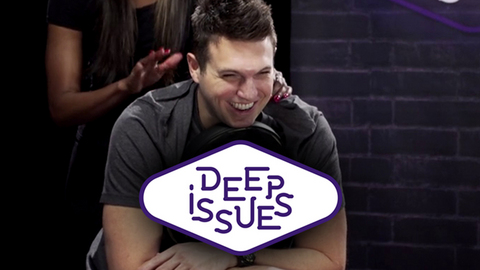
Doug Polk, getting the Deep Issues treatment
Including interviews with well-known players such as Liv Boeree, Phil Hellmuth, and Fedor Holz may be one thing, but also featuring industry heads like Mori Eskandani really shows that the format is looking to go one step further than “normal” interviews, and really bring about more discussion about the wider industry as a whole.
In the future, I’d love to see the series continue and add new episodes, mixing it up with some lesser-known players, or winners of WSOP bracelets and WPT titles. All in all, a highly enjoyable series that’s worth tuning in to watch.
Cardplayer Lifestyle would like to thank ProfessionalRakeback.com for sponsoring this series of PokerGO original programming reviews. We encourage you to visit their site and check out their offers.
When I started searching for poker rooms around San Diego, CA, all roads led to Ocean’s 11 Casino.
I recently started playing online poker again after a three-year hiatus and realized how much I missed the game. There’s nothing like playing live poker, however, and after a few weeks of grinding away at the micro stakes online, it was time to venture out and find some live action

With a handful of local casinos offering poker, I began looking into my options. Ocean’s 11 stands out as the go-to poker room for San Diego players, with 50 tables, NL Hold’em cash games with limits of up to $10/25, PLO, Limit Hold’em, and daily tournaments on offer.
Moreover, big name poker tours and festivals that feature a stop at Ocean’s 11 Casino include the WPTDeepStacks San Diego and the Card Player Poker Tour. That’s as solid a reputation as they come.
On a recent Friday night I dropped by to play in their $5,000 guaranteed NL Hold’em tournament. I made the 45-minute drive from San Diego up to Oceanside with much excitement as I prepared to play in a live tournament for the first time in years.
Immediately when I walked through the door, I knew I had found my live poker home. Ocean’s 11 isn’t a traditional casino with rows of slot machines to navigate through while trying to a find a poker room that ends up being stuffed in a hidden corner of the casino floor.

Poker is front and center at this casino, and just about all of its 50 tables were full when I arrived a little before the 6 p.m. tournament was set to begin. Every seat in the cash game room was taken, and the tournament room was beginning to fill up for the Friday night event.
I took my seat at Table 26 in the corner of the tournament room, and in the two hours that followed I witnessed some fascinating interactions among the characters at my table. This was my first taste of live poker since moving to San Diego in 2015, and it was a lot of fun.
I have to be honest in that I did feel a bit rusty, but it’s not as though I had to start from scratch and revisit poker strategies for beginners. After a short while, I felt like I was getting back into the swing of things, and soon enough I felt fully comfortable once again sitting at a live poker table. In a sense, even while players have gotten better over the last few years, getting back into the game after an extended break really is like riding a bike.
Anyhow, I plan on driving up to Ocean’s 11 Casino a lot more often, but hopefully next time I’ll play a bit better. I played exactly six hands in two hours and won two pots. The cards were not coming my way, but there were certainly spots I should have been more aggressive and gotten my stack in with the blinds getting higher.
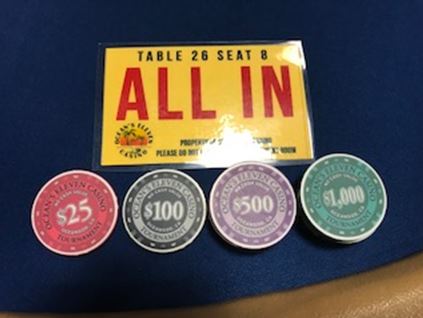
Since I wasn’t involved in much actual play, however, I enjoyed the opportunity to take in the experience with my fellow players around the table.
The older gentleman to my left became agitated when nobody called his turn bet of 50 chips during the first level, with the blinds at 25-25. “Come on, it’s 50!” he lamented when another player and I both folded.
A few minutes later he confided that he was holding a full house on that hand, and not having it paid off was his second unlucky instance of the night. Earlier in the day he was about to sit down at a cash game table when he witnessed a player at the table cash in on the $20,000 bad beat jackpot, which is paid when a full house of Aces full of tens or better is beaten by four-of-a-kind. He decided not to sit down at the game, figuring there was no way he’d have any luck following that… Go figure!
The woman to his left contested many pots, seemed to have an uncanny ability to call with marginal hands against bluffs, and was visibly upset any time she lost a showdown. She would show her hand and fling them into the muck in disgust any time the board didn’t go her way, and in between hands she was sure to remind other players about proper poker rules and etiquette.
Most of the players I encountered were regulars, and I’m planning on becoming at least a semi-regular at the poker room. The casino hosts a $10,000 guaranteed bi-weekly deepstack tournament that I’m going to check out when I get a chance, and at some point I’ll get in on the cash games as well.
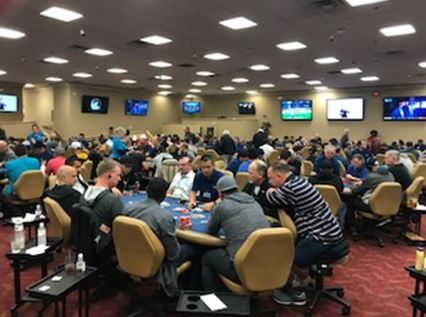
Hopefully things will go a little better for me next time. My 77 didn’t hold up against J8s for the last of my chips just before the second break and my night was over.
Before I left, I walked around and took a look at the rest of the casino. I got a look at the mural in the cash game room featuring the cast of the original “Ocean’s 11” from 1960, which starred members of the legendary Rat Pack.
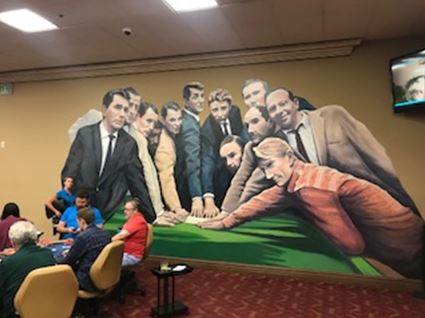
Another side room hosts blackjack, baccarat, three-card poker and Pai Gow, and a fourth room on the property acts as a sports lounge. And that’s it! This casino is definitely geared toward poker players, and as I get back into playing the game I’m thrilled to have something like this just up the way from where I live.
I’ll be back to play more (hopefully better) poker, and I can’t wait to check out one of those major festivals, most likely the WPTDeepstacks Tour, when it comes through town!
Most poker players dream of playing in the Main Event at the World Series of Poker. The opportunity to play with the best in the world is enticing enough, but you also get to play with them for the most coveted prize in poker. Millions of dollars, television cameras everywhere, and bragging rights in your home game forever if you manage to simply make the money.
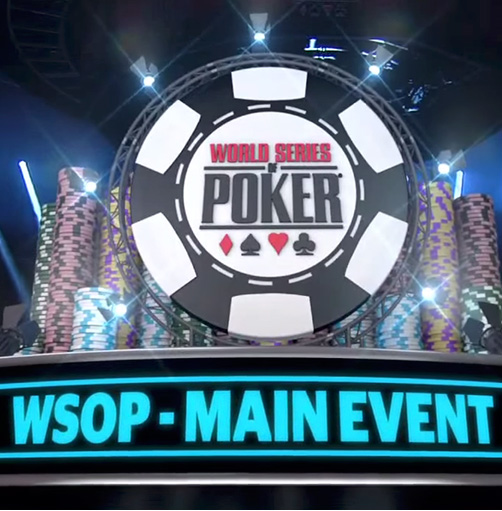
The biggest event in all of poker; the WSOP Main Event!
I won’t tell you that it isn’t fun. It is. It’s a wild ride, the most fun you can have playing poker. The experience of finishing in 32nd place last year out of more than 7,000 entrants is one I’ll never forget. But should you really drop $10,000 on a single tournament buy-in? Not unless you would spend that $10,000 on a similar vacation experience. If you wouldn’t spend ten grand on a fantasy baseball camp or a few rounds of golf at Augusta with a famous pro, you shouldn’t spend it on a poker tournament. Most players are better off playing a few smaller events and some daily tournaments at the Rio during the WSOP than buying directly into the Main Event.
However, that doesn’t mean you can’t play in the biggest event of the year.

Many players who play “the big one” manage to snag a seat by selling action. This means that other people pay a portion of their buy-in and get a piece of any winnings. If you are an established player with some nice wins under your belt, selling action can be easy. Known pros just talk to a few friends or post on Twitter and sell whatever action they need. For a lesser known player, selling action can be tough, especially if you are trying to sell enough action to play a big event.
People selling action on twitter be like: “Felt really good today, really in the zone. Did some great work on my game recently and feel I’m playing better than ever. Selling all WSOP NL Action at 1.5 and all PLO action at 1.75. Small discount on larger pieces. pic.twitter.com/t7HmApc4Pw
— Christopher Kruk (@KrukPoker) March 23, 2018
Before we start talking about how to sell action, let’s talk about what it means and how the deal works.
When you sell action you will need to make an offer that sounds like this –
“Selling a $20k package for WSOP this summer at 1.2.”
What this means is that you are going to play $20,000 worth of tournaments and for every $100 of action people want to buy they will have to pay $120. That’s called “mark up” and it is typically charged by better players who can get a premium because they have a high win rate. Of course, selling action isn’t just limited to the WSOP Main Event. You can sell action for any tournament run by any operator at any buy-in level.
If you are unknown you will likely have trouble getting a mark up and should probably just sell at 1.0 or “no markup.” If you have more than $200,000 in winnings reflected on your HendonMob.com profile, you may be able to sell at 1.1. If you have $500,000 and are a well known player, you may be able to sell at 1.2 or higher. The only way to know is to ask a few people who know the game and give it a shot. Start low your first time. If you sell out quickly and do well, you can charge a higher markup next year.
If you sell a package of events rather than just one tournament, you will usually generate more interest because people like having multiple chances to win and it cuts down the likelihood that they will get nothing back. When someone buys 1% of your action, they get 1% of your total winnings for the package or for the specific tournament.
Get the money: Always get the money before the first event in your package starts. Always. ALWAYS! If someone wants 5%, but they have not paid you for the 5% before you start your first tournament, text or email them letting them know that they do not have a piece of your action. Do not break this rule. If you bust out of your first few events, they are very likely to change their mind about buying action. If you win your first event, they will definitely want their 5%. You are just letting someone freeroll you. It is no fun to try and collect money from someone after you have lost money on your package. Let everyone who is buying action know that they must have money to you by a certain date, hopefully at least a week before the first event, or they won’t have any action.
Update your backers: If you want people to keep buying action from you, keep them updated on your progress. Even if you are just messaging to let them know that you busted out of an event and will be playing another event the next day, they will appreciate the information. Many people are buying action as much for the vicarious thrill of playing along as anything. They want to win of course, but what they really want is the sweat. Make them happy.
Process refunds accordingly: If you end up not playing in an event, that percentage of the package should be refunded to your backers unless you have specified that you will play other events to make up any events that you miss. Play it completely straight. The first time you play around with their money will be the last time they invest in you. Tell them what you are going to play, play those events to the best of your ability, and keep them updated and your backers will likely invest again even if you don’t make them money the first time.
Be responsible: Since this is someone else’s money, you have a responsibility to them. You can play with your own money on short sleep, while you are drinking, and when you are tilted. With someone else’s money you absolutely cannot do these things. If you aren’t responsible with their investment, they will never invest again.
“Show them them money!”: When you are talking to potential backers, tell them that you will pay out winnings within one week of the end of the last tournament. No later than that, and not during the package. If you have a big score and haven’t made this clear, your backers will show up wanting their money in the middle of a tournament. I guarantee it. It’s happened to me many times.
When I won my bracelet in 2014 I had 18 people who bought a piece of my action. When I had the bracelet sized to fit my wrist, I had the extra gold cut into 18 pieces and they each got a piece in a glass vial along with a thank-you card. Those people have always been ready to invest in me again whenever I need it. Treat your backers this way and you will never have to worry about selling out a package. People will beg for the chance to buy action from you if you have a reputation for being professional and profitable.
Chris “Fox” Wallace (@foxpokerfox) wins his first WSOP gold bracelet and more than $500K in the 10K HORSE Event. http://t.co/H5yowrM7Ei
— WSOP (@WSOP) June 11, 2014

My thank-you note to the investors who backed me for the WSOP
When you have a big score, you will need to deal with taxes. Each of your backers should be aware that they will be responsible for their own taxes on any profits. You will be sending them a 1099 form with their net profit on it and they will be responsible for paying taxes on it as income. As long as they know this is coming they won’t complain about it because they made money! I have done this myself a few times; it’s not a big hassle, but now I have my accountant do it.
Dealing with a big win can be a hassle, so find an accountant who understands gambling. I recommend Kondler CPA in Vegas. They will answer questions for you for free; just call them at (702) 433-7075. They have been great with my taxes and they really know their stuff. It saved me a lot of money to have them dealing with my taxes instead of doing them myself.
READ MORE: Interview with Poker Tax Specialist Ray Kondler CPA
When you book a win, pay your backers on time and in full. I like to send out payments within a few days of the end of the package. Unless you know and trust your backers completely, pay with a check, bank transfer, or PayPal. Thus, there will be a record that they bought some action, whereas if you just hand them cash you could lose a lawsuit when if claim they were never paid and you don’t have any proof that you paid them. I recommend putting together a spreadsheet with the events in your package, the buy-ins, and the total action for sale.
Finally, don’t sell too much action. You don’t want to win a million dollars and walk away with crumbs because you sold all of your action. Buy your own action up to what you can reasonably afford and sell the rest.
Good luck selling action. Start small, be professional, and play your best. The rest will take care of itself. I’ll see you at the tables!
If you had ever heard about staking when you first started playing poker, you probably asked yourself a couple questions: Why would any winning player want to reduce his income and share a percentage of his profits with an investor? Why would any backer trust any person that is looking for money to play poker?
However, after a while, you come to realize that some opportunities come to you from being staked that you otherwise would not have. Maybe you are a good tournament player and dream about winning the WSOP Main Event, but can’t afford the $10,000 buy-in. Even among the world’s top high rollers, there are often staking deals in play, which enable the pros to take seats at prestigious five- and six-figure buy-in events around the world. Obviously, staking is not for everybody, as decent winning poker players with sizable bankrolls who are confident enough in themselves and value complete freedom would not benefit from sharing a huge portion of their income and becoming a “horse” in a “stable,” at least not full time. However, even in cases like this, it may be a good idea to consider staking in certain specific situations, on a restricted basis. To help you understand those situations, we’ve put together a list of the top 10 reasons you should consider getting staked to play poker.

Image credit: stakingpros.com
Playing on someone else’s dime can help you better deal with variance and play under less pressure. For some people not risking your own funds causes you to play more at ease and therefore, much better.
Obviously, this is not as easy as it sounds. From a mindset point of view, there are times that losing investor’s money can hurt even more than losing yours. And in most staking agreements there is a make-up clause. This means that you have to win back money you lost first in previous cash games or tournaments (for your backer) before you can profit; and if you fall deeply into make-up, there are only four ways of getting out of it: winning consistently, getting dropped by your backer, paying back from your own pocket, or quitting poker.
Some people seem to believe that selling action, especially for lowerstakes stuff, is bad/weak/silly/nitty/etc?
My rule of thumb for what I play and how much I have is based on what my personal poker bankroll is at.
This roll I keep entirely separate from my life roll.
— Ryan Laplante🏳️🌈 (@Protentialmn) March 28, 2018
The following question may appear strange: How can a winning player find himself in a situation in which he has no money to play poker?
This is a rare occurrence, but it happens. There are instances in which something bad happens in your life and you must cover large expenses, such as family health crises. Maybe you’ve received an insanely interesting business offer and have decided to invest your poker money into it. Or perhaps you are just a MTT player, where variance is enormous, on long downswing and your life expenses caused your to deplete your funds. Whatever happened, if you have good explanation to present to your potential backer, demonstrating to him that you are long-term winning poker player will often give you a good chance of getting staked.
The alternative is depositing small amount of money online or even playing freerolls to try to climb back towards the higher stakes on your own; it’s usually a worse choice, as this takes a relatively long time and there’s also ‘opportunity cost’ if you’re good enough to beat high stakes games and neglect to play them.
Just reflecting on how supportive my wife was of selling our house 2 years ago, moving across the country, and using the money from our home sale to fund my poker bankroll. Pretty amazing woman. Fortunately I didn't literally lose the house. Yet.
— Chase Bianchi (@Chase_Bianchi) November 21, 2017
If you are a winning player at your current stakes, you probably have already started thinking about moving up. Sometimes it is tough to do, though: you have to cash out regularly because you play for a living and you need money to pay bills. In this case, staking can help you take shots at higher stakes and make more money or simply compete with others on a higher level. This is something that even the best poker players in the world do: they sell actions to nosebleed-stakes cash games or high roller tournaments, which allows them to make bigger profits and find more sponsors to support their game.
Each day is a higher stakes poker game.
— Nasir (@NasirAhmed___) March 16, 2018
No one said staking has to be ongoing. You could try to get staked on a one-off or temporary basis while you test out your skills playing a new poker variant before you decide to move into it on your own. While this is not 100% akin to a situation where you’ll try play money games at an online casino or poker room before trying real money play, getting staked does share that common denominator of there being a lot less risk to assume on your own. Getting staked offers you a comfortable situation wherein you can test your skills and figure out your potential winrate in a new poker variant, as well as whether you will enjoy it or not, without losing big.
In poker’s staking world there is something called markup. For example, let’s take a case where you’d decide to sell half of your action in a $1,000 buy-in tournament. But, rather than sell your action at “face value,” you instead sell at a rate of 1.2:1. This means that you will receive $600 instead of $500 from investors. It isn’t easy to get markup, but if you are a very good player, it is certainly possible to convince investors that you’re a good bet. Put plainly, if people see added value in staking you, you can get paid for it. Thus, in our example above, if you wouldn’t cash in the tournament you’d lose your $500 but also “make $100 back” from people staking you.
When you see a poker pro selling their package at markup arrive 2 hrs late to the tourney after three of the fish have already busted pic.twitter.com/oNY7sjMcRZ
— Thomas Fuller (@gnightmoon) June 27, 2017
There are many staking deals that offer a bonus of free coaching from the backer(s). Sometimes backers are even willing to invest into breakeven or slightly losing players because they see the potential of turning the horses into winning players.
Thus, if you get staked, even if you end up losing you still keep what you’ve learned from your coaching sessions with the backers. Strictly speaking, you can certainly develop your poker career a lot faster if you learn and internalize lessons from great poker players.
Many investors offer staking for groups of players, connecting them, for example, via Skype/Slack channels. There are three types of relationships that you can have with your colleagues in these groups.
Maybe one day you will decide to stop playing poker professionally and make money in poker different way. Often, you may discover that someone in your staking group from “back in the day” will prove to be a great business associate for a joint venture.
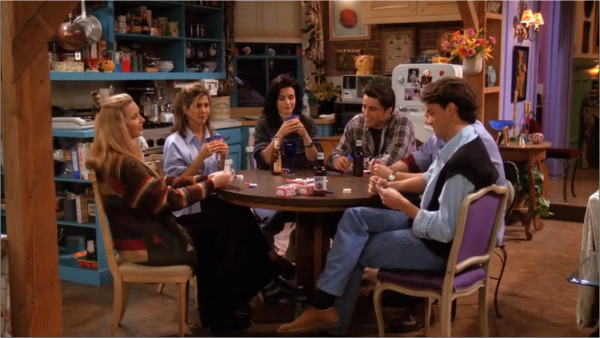
“poker friends” (for illustrative purposes only)
The biggest poker staking and coaching companies have tons of experience when it comes to business: they hire many employees, they back a lot of players, and they often look for new opportunities to make money. Moreover, observing how investors manage their business and how contracts and agreements are constructed can help you become an investor yourself someday.
One other thing to mention here, relationships you’ve made in poker could potentially grant you access to better deals and more profitable games. For example, maybe you are not sure which online poker room or variant/format you should choose. Your backers may give you some very helpful advice, from which you could derive a tidy profit.
If you’ve had a long break from poker and you’ve decided to get back to it, getting staked can be a sensible way to dip your toes back in the water before you start playing on your own. Specifically, it can make things easier as you get back into the right mind frame to succeed at the felt.
Take a break from poker whenever it stops being fun. https://t.co/29SMnBtVtM pic.twitter.com/H2soO5ONOz
— PokerNews (@PokerNews) February 24, 2017
In many cases, getting staked can help make it easier for you to deal with deposits and withdrawals. When I mean by that is the following: backers are responsible for funds. Handling large sums of cash or wire transfers in brick and mortar rooms or experiencing any technical issues with payments in online poker rooms is “no longer problem.” Based on the particulars of your staking agreement, you may get paid by your backer after a big win even if they have to wait for their funds (your winnings) to arrive.
The more successful stake agreements you had in the past, the more likely you are to get staked again. Having a solid reputation is worth its weight in gold in the poker world. Word of mouth travels quickly in the staking community, and if you’re a solid bet with proven results, you won’t have trouble finding backers to stake you.
What’s more, the better your results over long stretches of time, the better agreements and you will be able to negotiate in your staking deals: playing for higher stakes, better markups, and percentages of profit shares.
As described above, getting staked has its pros and cons. It’s important to take into consideration your personal situation before you decide to sign a staking contract. Remember that the higher the limits you’re playing for, the easier it is (due to variance) to get stuck in make-up for very large amounts of money. On the other hand, of course, staking can help you take shots in games you only have dreamed of (which you’re capable of beating but have never had the right bankroll for), develop your poker career and skills faster, make new relationships and business opportunities, or come to the rescue when you lose your bankroll for some reason.
Recently, we discussed several reasons for raising while playing Hold’em: Raising to Thin the Field; Check-Raising (building the pot); Raising for Value; and Raising for Information – to enhance your winnings. Many players may not be aware of other strategies related to raising, so below are four special cases you ought to be aware of and add to your arsenal.
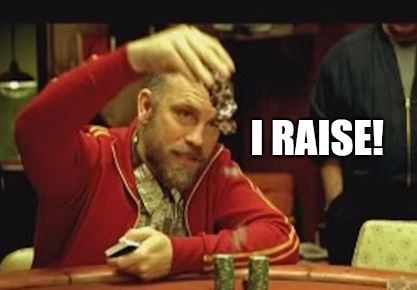
Raising from an early/middle position before the flop with playable non-pairs, and using the Esther Bluff, you are representing a big pair in the hole. That’s what your opponents put you on.
Results: Thinning the field increases your chances to win the pot (hopefully, your hand will improve). Also, after your raise, the remaining players respect and may even fear you. You are in control. Usually, they will check to you on the flop. Then, your continuation-bet may steal the pot. It’s a semi-bluff.
Likewise, pre-flop, if you are in a late position and the betting is folded to you, leaving only the Button and the two blinds, your raise can steal the pot. Not a big pot, but enough to pay for your next blinds. Don’t try this maneuver if there is a loose-aggressive opponent yet to act.
C-betting a weak flop tends to work relatively often. For the same reason, raising a c-bettor on a weak flop can also work out pretty well.
Poker lesson of the day, by my buddy Eugene: “One and done.” A c-bet made on a weak flop – take it down uncontested, or fold. #poker
— Nichole Dow (@iheartchem) October 23, 2015
Two others and you limped to see the flop. It is a weak flop – middle and small cards, unsuited and no connectors. One opponent bets out; you are next to act. You have a playable hand – say J-10 offsuit – that would need to improve to beat your opponents on the showdown. In this case, make your raise using the Esther Bluff. This may well be enough to force the others out, leaving you the pot.
Holding A-A, K-K, or Q-Q, there has been an early-position raise. Several players call the raise. Your turn to act. Your reraise will thin the field and/or build the pot. Reducing the number of players in the hand increases your chance of winning. Those who had already called the original raise, almost certainly will call your reraise, thereby building the pot you expect to win.
Poker Tournaments: When you have a strong hand early, try to build the pot to get ahead of the rest – more pressure for them
— PokerClass (@PokerClass) April 4, 2012
Hopefully, cheating never happens in your casino… If two players are colluding (cheating) to build big pots when one of them has a powerful hand, raising is their weapon. On the flop, Player A signals (by a prearranged scheme) to his “partner” (Player B) that he has caught a big hand – say it’s a set of 9s.
Player A, in a middle position, just calls an early-position bet, along with several others. Player B, in a late position, then raises the bet, thereby building the pot when everyone who had already invested a single bet, calls his raise.
On the Turn, with his set of 9s apparently well in the lead, Player A just calls an early-position opening bet along with several others. Then, Player B makes the big raise. Several opponents and Player A call his raise. The pot is growing!
On the River, with no discernible threat to Player A’s set of 9s, after an early-position bet, Player B raises the pot. Two opponents call his raise. Then Player A re-raises. When the action returns to Player B, he shakes his head, and quietly mucks his hand. (He didn’t want anyone to see what he had been raising with.) And the colluding team takes a monster pot.
This article has been brought to you with the support of BusinessInfoNews.com. For more information, please visit their website.
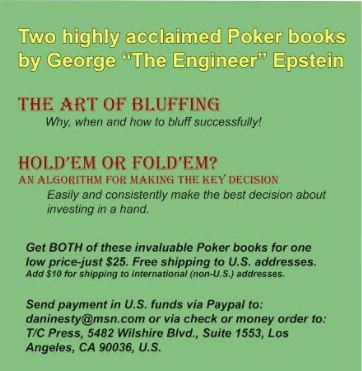
When I heard that Upswing Poker offers a Mixed Games course, I was naturally skeptical because I don’t remember Doug Polk and Jennifer Harman playing any epic heads-up matches. All kidding aside, you could say I was checking my expectations… and then I happened upon Upswing Poker Mixed Games Mastery.
I’ve played mixed games all my life. I grew up playing Stud and Draw games and didn’t even bother to pick up Texas Hold’em until I was in my mid-20s. Even then, I preferred mixed games and only played Hold’em when I had no other viable option.
I know what to look for when I review mixed game material. Often, I come away somewhat underwhelmed. So, when I heard that there were 100+ videos worth of content on mixed games in the Upswing Poker course, my interest was piqued.
Was this going to be 30 hours of legit instruction or a bunch of filler material? Fortunately, what I found was a course that one of the best primers for mixed games that I have seen in a long time.
The instructor of Upswing Poker’s Mixed Game Mastery course is Jake Abdalla, an expert mixed games player who has won over $1.3 million playing online. His course is designed to first introduce you to and then teach you advanced strategies for Razz, Stud, Stud 8, Omaha 8 or Better and Triple Draw (i.e., the majority of variants in the classic 8-game mix).
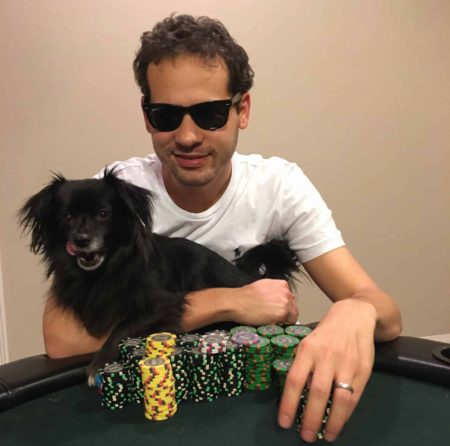
Jake Abdalla
Broken into the five variants, each section of the course begins with the basics of each game then quickly accelerates to advanced concepts. Overall, it’s designed to help you build your game from the bottom up, stressing the importance of both studying as well as playing in order to properly learn and improve.
In approaching the mixed games, Abdalla notes that discussions are centered around ranges and frequencies. Rather than memorizing exact charts, you’ll need to develop the ability to approximate on the fly, get a feel for ranges, and think on your feet. On the one hand, this is of course less precise and technical than PLO and Hold’em, but it is true for your opponents as well.
For the relatively uninitiated, it’s also important to note that all the games discussed and dissected in this course are played with fixed limits, so it will feel different from big bet games (PLO/NLHE). Generally speaking, you’ll need to get used to seeing many more showdowns, simply because you’re priced in so much more often to make the calls.
In addition to playing poker since I was a kid, I’ve also been teaching people how to play various poker games for decades. So when I look at training materials, I see whether a rank beginner can learn the game from scratch.
I like how Abdalla approaches each game, starting with the basics of each game. He approaches the game assuming you have a background in NL Hold’em and a lot of his lingo is reflective of that fact.
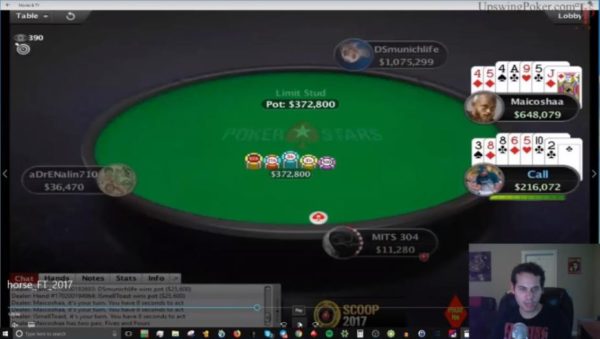
Abdalla providing instruction and commentary
It doesn’t matter whether you have some background in mixed games or not as these tutorials start at the beginning and covers everything from basic rules to starting hands, position, and every fundamental concept you’ll need to get started.
One thing that I wish he did more of is give actual example hands during the introduction of the rules. His opening lessons are mostly lecturing with a copy of the lesson notes on the screen. For some, this is perfectly fine. However, knowing that a large number of people are visual learners, this is an area I think his opening falls short.
With that said, one thing that I like is how he gives a statistical analysis of starting hands. In many games, he breaks down your equity in various hands versus likely hands from other opponents. For those who are a bit more analytical in their approach to the game, this will help show them their edges or lack thereof and possibly save them from playing too many hands early on.
Some trainers tend to get a bit lazy in their approach to mixed games and only cover the topics that are common to each game. While this certainly can give a nice overview, it seldom adequately prepares a player to jump into mixed games.
Abdalla does precisely the opposite. For each game, he has a unique outline and approach that he uses. For example, he has at least three videos on playing each drawing round in Triple Draw in addition to videos regarding pre-draw scenarios, drawing techniques and more.
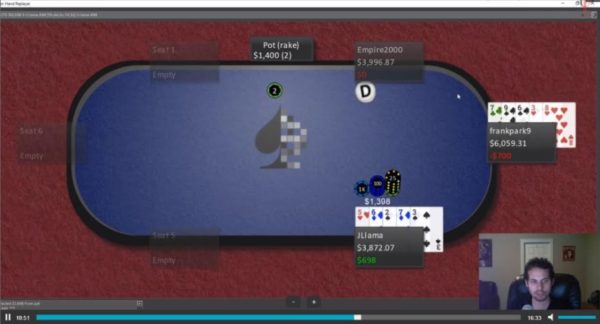
Triple Draw module
He does the same type of deep dive into each game that he covers. With the sheer amount of material included in each game, this could easily be split up into separate courses on each game.
Though it was clarified from the get-go, I was nonetheless a bit surprised that this course didn’t include and cover Limit Hold’em. A lot of players delving into mixed games for the first time have next to no experience in Limit Hold’em and learn the hard way that merely trying to apply NL strategies to Limit does not work long-term. So, at least in my opinion, there ought to have been that sixth variant covered in this course.
READ MORE: Upswing Poker Lab – A Thorough Review
For the Stud games, the rules section needs to be redone a bit because there’s a minor error. Specifically, he says that if two players are tied, he thinks that they a tiebreaker is done by suits. Nope, that’s a chopped pot. If you’re going to teach Stud basics, you need to get the information correct. While some would consider this a nitpicky complaint, I can see a lot of experienced players raising an eyebrow at this.
Then again, how often do Stud players have to know the tiebreaker suits? Most of us only play the game online, and the software automatically determines the bring-in. The same for chopping the pot when two players have the same ranked flush.
Something that I would like to see for usability sake is a more precise definition of video controls. While playing videos, there’s no visible help menu. I just happened to notice a quick tooltip of “click ? for more options” before the video started and that happened to show the controls for the video.
Unfortunately, unless you happen to notice that little tooltip, you’re out of luck finding the controls because there are no additional prompts.
I remember back when I first started playing mixed games seriously and the amount of money spent on buying training materials and playing games live and online. Like many players, I focused on one or two games at a time and probably ended up spending much more than necessary in both time and money to improve.
Jake Abdalla’s mixed games course on Upswing Poker costs $999. On the surface, that sounds a bit steep, but here’s after going through the course myself, I’m beginning to think that it is a bit undervalued. That’s a little less than $200 per game that you’re investing in your poker training.
 What you get for your investment is solid instruction in five cornerstone variants of mixed games that will give you a distinct advantage over the average player. The average player is just going to pick up a couple of poker books, maybe read them and then try to grind their way to improvement. Sure, you could do that, or you could go the smart route and spend $999 upfront and get a solid course from a proven player.
What you get for your investment is solid instruction in five cornerstone variants of mixed games that will give you a distinct advantage over the average player. The average player is just going to pick up a couple of poker books, maybe read them and then try to grind their way to improvement. Sure, you could do that, or you could go the smart route and spend $999 upfront and get a solid course from a proven player.
On a final note, Abdalla stresses that “Perfect is the Enemy of Good.” This course will not make you a world-class player at every variant; for that you’ll needs thousands of hours of play and additional study. However, Upswing Poker’s Mixed Game Mastery course will make you competitive at a lot of game types, which is precisely where you want to be when playing in a mixed game. Poker is about extracting maximum value, and if you want to gain maximum value in mixed games, then you should consider taking this course.
I remember back in 2008 when the Women in Poker Hall of Fame (WiPHoF) was first forming. I thought that it was a fantastic concept and gave it as much press as I could in my PokerJunkie.com columns. When Barbara Enright, Linda Johnson, Marsha Waggoner, and Susie Isaacs became the first four inductees, I had high hopes for the organization and looked forward to its future.

Over the last 10 years, I’ve followed closely and have watched many influential women in poker inducted. In 2016, I was asked to join the media panel. Unfortunately, I somehow missed the email and discovered it two days after the voting closed. So this was the first year I had an official vote on the panel.
I am honored to have had the chance to vote for this year’s class and am proud of the ladies who were selected for induction. With that said, I feel that it is time that the WiPHoF expands to become an annual event so as to begin clearing the backlog of qualified candidates that’s starting to form.
It’s a bit surprising that it took 10 years to induct Lupe Soto into the WiPHoF, but I’m glad to see that it finally happened. There no mistaking the impact she’s had on women’s poker. We will probably never know the number of women who took up the game or upped their game to the next level thanks to her efforts.
Maria Ho receives induction in her first year of eligibility, and it’s hard to argue against her nomination. Her on-felt accomplishments are undeniable, with over $2.7 million in career earnings, multiple WSOP final tables and three deep Main Event runs (including her sixth place WSOPE run in 2017.) Couple that with her accomplishments as a broadcaster and presenter and she has left a legacy of positive influence on the game worthy of enshrinement.
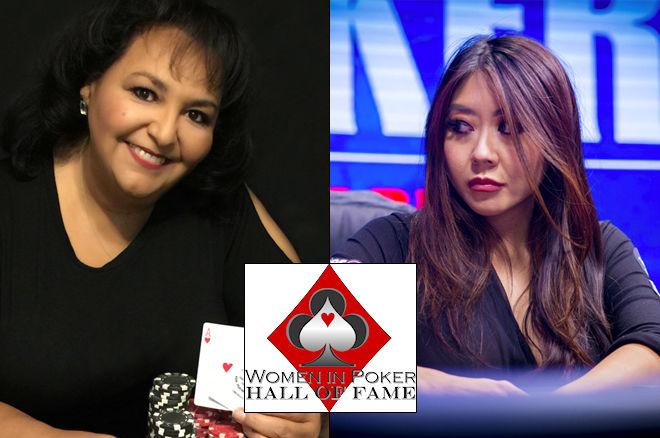
Lupe Soto and Maria Ho | Image credit: PokerNews.com
Some people would take the opportunity to argue their case on why they felt a particular nominee was snubbed. Instead, I’ll point out why both women best fit the ideals of the Women in Poker Hall of Fame:
The WiPHoF isn’t just about the best female players but rather also about those who have had a lasting impact on women in poker. Considering their many years of work, it is hard to argue that they should not be this year’s inductees.
In past years, my decision on who I felt should or should not be in the WiPHoF seemed pretty straightforward. This year, things were not so simple. I had arguments for giving votes to up to six nominees, but ultimately whittled it down to three (Ed. note: each member of the voting panel is allowed to split 10 votes among as many nominees as they like).
If this year proves anything to me, it is that there are plenty of deserving women that belong in the WiPHoF, so much so that perhaps it is time to begin annual inductions into the hall. Personally, I have been advocating yearly selections for the last four years.
In 2016, I wrote an article on PokerUpdate.com entitled “9 Women That Deserve to Be in the Women in Poker Hall of Fame.” Two of those women have since been inducted. Four of those women didn’t even make the list of finalists this time around. Include the nine that didn’t make it this year, that’s at least 13 deserving women, or more than “six years worth” of annual inductions.
Plus, there are over a half dozen finalists from past years, such as Ruth Hall, Donna Blevins and others who also merit future consideration.
Also, let’s not forget that numerous other women will become eligible in coming years. Vanessa Selbst and Liv Boeree both turn the minimum qualifying age of 35 in 2019. Vanessa Rousso turns 35 in 2020. Then you have future potential WiPHoFers including Loni Harwood, Kristen Bicknell, Annette Obrestad, and others.
That’s not even considering other prominent women of poker’s past or industry and media professionals, many of whom appeared on this year’s list of nominees. In short, there’s no shortage of women to induct, so let’s get started!
My sentiment regarding the WiPHoF is not just some talking point that I use to try and create buzz. Instead, I have had multiple conversations in the past with WiPHoF founder and 2018 inductee Lupe Soto.
Like I’ve done for the past few years, I once again revisited the idea of annual inductions following Tuesday’s announcement, and this is what she had to say:
I do believe we’re approaching the time where the Hall can be an annual event. There are now an adequate amount of women who are qualified to be inducted.
This is a transitionary time for the Women in Poker Hall of Fame, and these kinds of questions and thoughts are important as we move forward.
Lupe Soto
Much like the WSOP-sponsored Poker Hall of Fame, the WiPHoF is beginning to get a bit of a backlog of qualified candidates, and it is time that the hall expands and starts honoring these women on an annual basis.
I find it promising that both PokerStars and 888poker stepped up to sponsor this year’s event. Celebrating women in poker is something that the industry as a whole should do, and I applaud both companies for supporting and celebrating women in poker.
I’d love to see them continue to sponsor the WiPHoF and help the organization grow and become the annual event it deserves to become.
Whether the event becomes an annual event or stays on the present two-year induction cycle, I look forward to seeing what the future holds for the WiPHoF as it continues to enshrine elite women in poker.
This article has been brought to you with the support of Reclaimarbor.com. For more information, please visit their website.